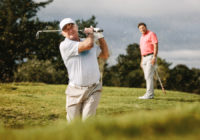Rickets is a childhood condition that causes problems with normal bone development. It can lead to pain, poor bone growth, and softer bones which can lead to deformities in childhood or later in life.
Osteomalacia is a similar condition more commonly found in adults, although it can also occur in children. This condition is also known as soft bones and can cause pain, tenderness, and changes to a person’s gait.
Although the two conditions are similar, some fundamental differences set the two apart. This is to do with the development of the bone structure in children and adults and what effect this has on the condition. In this day and age, our Chiropractor in West Vancouver does not encounter either of these conditions very much. This is because our diets and lifestyles have progressed significantly over the decades that really prevent these two conditions from happening.
However, these two conditions still persist in other parts of the world and it’s still a good idea to know what causes them and how to prevent them.
Understanding Rickets
Rickets used to be far more common than it is today in the Western world. It has largely disappeared due to better diets and better quality of life. The understanding of what causes Rickets has also made it easier to prevent and treat it.
Rickets is caused by a lack of Vitamin D (and also, calcium). As Vitamin D is naturally collected from the sun by your child’s body, regular exposure to sunlight will protect children from this condition.
Vitamin D is also found in dietary items such as fish and eggs. Many foods, such as cereal, have been fortified with Vitamin D for easier intake in a child’s diet. Plenty of calcium in the diet is also important.
On rare occasions, rickets can be caused by a rare genetic inheritance. Rickets may also develop if the intake of Vitamin D or Calcium is impaired by some other condition.
How is Rickets treated?
The symptoms of Rickets are fairly straightforward and this does mean it’s easier to diagnose in children. It focuses on general bone pain which usually manifests itself in a child’s reluctance to walk, or a difference in their gait.
Other symptoms may include thickening or deformities of the bone around ankles or wrists, or elsewhere across the body; dental problems such as early tooth decay; fragile bones, with fractures or breaks occurring when they shouldn’t, and lastly, slower than expected growth/development.
Rickets is treated in the same way that it is prevented – making sure children get an adequate intake of Vitamin D and Calcium. If a child has another condition that prevents a regular intake of Vitamin D or Calcium, shots or injections may be recommended. If you are seeing some of these symptoms in your child or young adult, please make an appointment with your doctor to have a check-up to make sure. Early treatment is crucial to prevent a lifetime of unnecessary pain and even disfigurement.
Understanding Osteomalacia and Rickets
Osteomalacia, while more commonly found in adults, can occur in both adults and children. This is because children’s bone growth plates are yet to set, whereas adults have set growth plates.
In terms of symptoms and causes, Osteomalacia is very similar to Rickets. It is again caused by a lack of VItamin D, whether through malabsorption, a lack in the diet, or poor exposure to sunlight.
Osteomalacia will likely cause bone pain and tenderness in adults, whereas Rickets is more likely to cause growth deformities and slow development in children.
Here’s a rundown of the key components of each condition.
Osteomalacia
- Can occur in adults and children
- Most common symptoms/effects are tenderness in the bone and pain
- Pathological broken bones – bones broken by disease rather than injury
- General muscle weakness, cramps or unexplainable spasms
Rickets
- This can only occur in children
- Different types of bone deformities are common
- Can lead to the softness of the bones, including the skull
- General impaired growth/slow body development
Preventing Rickets and Osteomalacia, Advice From Your Chiropractor in West Vancouver
Although Rickets and Osteomalacia are fairly uncommon in Canada, with 2 out of 100,000 children having some symptoms of the condition, it is still wise to understand how to prevent rickets.
It’s all about Vitamin D. With shorter days during the winter it’s important to get out of the house regularly during daylight hours. Here in Canada, the most common areas with higher Rickets cases are the northern territories where there is less sunlight. Darker skin complexions and other conditions can also have an impact on the intake of Vitamin D.
If you or someone you know is having symptoms that sound like Rickets (in children) or osteomalacia (in adults), they should visit a medical professional immediately. The sooner they receive diagnosis the sooner treatment or recommended lifestyle changes can be made.



